Yamaha YBB-321, YEP201S, YAH-203S, YEP321, YEB201S Owner’s Manual
...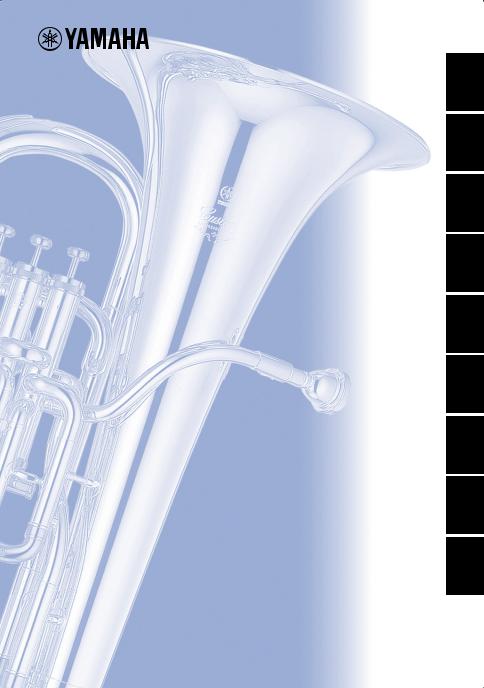
/ // /
Alto (Tenor) Horn/Baritone/ Euphonium/Tuba/Sousaphone
Owner’s Manual
Althorn/Bariton/
Euphonium/Tuba/Sousaphon
Bedienungsanleitung
Alto/Baryton/
Euphonium/Tuba/Sousaphone
Mode d’emploi
Trompa alto/Barítono/ Eufonio/Tuba/Sousafón
Manual de instrucciones
Trompas Alto (Tenor)/Baritono/ Bombardino/Tuba/Sousafone
Manual de instruções
/ / //
Альтгорн/Баритон(Тенор)/ Эуфониум(баритон)/Туба/Сузафон
Руководство пользователя
/ // /
<![endif]>Русский Português Español Français Deutsch English
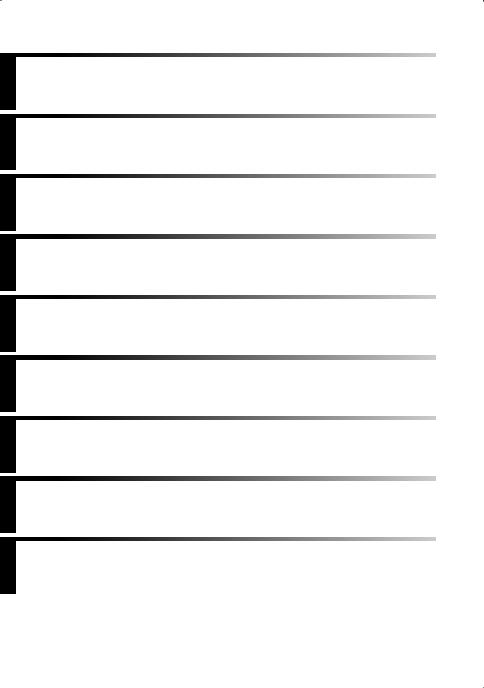
|
|
|
|
|
P.3 |
|
|
You are now the owner of a high quality musical instrument. Thank you for choosing Yamaha. |
|
For instructions on the proper assembly of the instrument, and how to keep the instrument in optimum |
|
condition for as long as possible, we urge you to read this Owner’s Manual thoroughly. |
P.19 |
|
|
Sie sind nun der stolze Besitzer eines hochwertigen Musikinstruments. Vielen Dank, dass Sie sich für ein |
|
Instrument der Marke Yamaha entschiedenen haben. Um mit den Handgriffen zum Zusammensetzen |
|
und Zerlegen des Instruments vertraut zu werden und dieses über Jahre hinweg in optimalem Zustand |
|
halten zu können, raten wir Ihnen, diese Anleitung aufmerksam durchzulesen. |
P.35 |
Vous êtes dès à présent le propriétaire d’un instrument de musique de haute qualité. |
|
Nous vous remercions d’avoir choisi Yamaha. En ce qui concerne les instructions relatives à un assem- |
|
blage adéquat de l’instrument et sur la façon de garder l’instrument dans des conditions optimales aussi |
|
longtemps que possible, nous vous conseillons vivement de lire entièrement le présent Mode d’emploi. |
P.51 |
Usted es ahora propietario de un instrumento musical de alta calidad. Le agradecemos su elección de un |
|
instrumento Yamaha. Le aconsejamos que lea todo este manual de instrucciones para ver las instruc- |
|
ciones para el montaje correcto del instrumento y para aprender a conservar el instrumento en óptimas |
|
condiciones durante tanto tiempo como sea posible. |
P.67 |
Agora você é o proprietário de um instrumento musical de alta qualidade. Obrigado por escolher a marca |
|
Yamaha. Aconselhamos que leia cuidadosamente todo o manual do proprietário para ver as instruções de |
|
montagem adequada do instrumento, bem como manter em ótimas condições de uso pelo máximo de |
|
tempo possível. |
P.83 |
! , , |
|
, |
|
|
P.99 |
|
|
Вы стали обладателем высококачественного музыкального инструмента. Благодарим Вас |
|
за выбор продукции Yamaha. Для получения инструкций по правильной сборке данного |
|
инструмента и его длительном хранении в оптимальных условиях мы настоятельно |
|
рекомендуем Вам внимательно прочитать настоящее руководство. |
P.115 |
. .
P.131
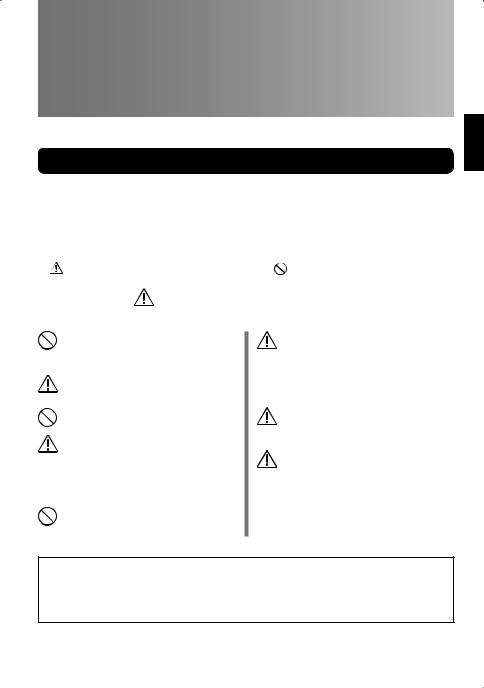
Alto (Tenor) Horn/Baritone/
Euphonium/Tuba/Sousaphone
Owner’s Manual
Precautions Please read before using
The precautions given below concern the proper and safe use of the instrument, and are to protect you and others from any damage or injuries. Please follow and obey these precautions.
If children are using the instrument, a guardian should clearly explain these precautions to the child and make sure they are fully understood and obeyed. After reading this manual, please keep it in a safe place for future reference.
■ About the Icons
: This icon indicates points which should be paid attention to. |
: This icon indicates actions that are prohibited. |
|
|
Caution |
lead to damage or injury. |
|
Disobeying the points indicated with this mark may |
|
|
Do not throw or swing the instrument when others are close by.
The mouthpiece or other parts may fall off hitting other people. Always treat the instrument gently.
Keep the oil, polish, etc., out of children’s mouths.
Keep the oil, polish, etc., out of children’s reach and do maintenance when children are not present.
Keep small parts out of the reach of infants.
Your children may accidentally swallow them.
Be aware of climatic conditions such as temperature, humidity, etc.
Keep the instrument away from heat sources such as heaters, etc. Also, do not use or store the instrument in any extreme conditions of temperature or humidity. Doing so may result in damage to key balance, linkage, or pads, resulting in problems during performance.
Never use benzene or thinner for maintenance on instruments with a lacquer finish.
Doing so may result in damage to the finish’s top coat.
Take care not to disfigure the instrument.
Placing the instrument where it is unstable may cause the instrument to fall or drop resulting in disfigurement. Take care as to where and how you place the instrument.
 Do not modify the instrument.
Do not modify the instrument.
Besides voiding the warranty, modification of the instrument may make repairs impossible.
Be careful that the bell does not fall off.
Make sure that the Sousaphone’s bell is firmly secured in place. Make sure the bell screws are tightened firmly so that the bell does not fall off hitting others while marching.
Take care when storing this very large instrument.
The case is very large so always lay the case on its side to prevent the case from falling over, or to prevent fingers from getting pinched by the case’s lid. Also, close the lid after removing the instrument from the case.
In regards to brass instruments with a plate finish, the color of the finish may change over time however, it should be of no concern in regards to the instrument’s performance. Discoloration in its early stage can easily be removed with maintenance. (As discoloration progresses, it may be difficult to remove.)
*Please use the accessories that are specified for use with the particular type of finish found on the instrument. Also, metal polishes remove a thin layer of the finish’s top coat which will make the finish thinner. Please be aware of this before using polish.
19

 Nomenclature
Nomenclature
■ Alto(Tenor) Horn
Bell |
Mouthpiece |
|
Mouthpiece Receiver
Leadpipe
1st Valve Slide
Main Tuning Slide
|
|
|
|
|
|
|
|
Cap |
|||
|
|
|
|
|
|
|
|
|
|
|
Water Key |
|
|
|
|
|
|
|
|
|
|
|
|
|
|
|
|
|
|
|
|
|
|
|
|
|
|
|
|
|
|
|
|
|
|
|
|
|
|
|
|
Cap |
|
|
|
|
|
|
|
|
|
3rd Valve |
|
|
|
|
|
|
|||
|
|
|
|
|
|
|
|
|
|
|
|
|
2nd Valve |
|
Valve Casing |
3rd Valve Slide |
|||||||
1st Valve |
|
|
|
|
|
|
|
|
|
||
■ Baritone
Mouthpiece
Bell
|
|
|
|
|
|
|
|
Mouthpiece Receiver |
|
|
|
|||
|
|
|
|
|
|
|
|
Leadpipe |
1st Valve Slide |
|
|
|
||
|
|
|
|
|
|
|
|
|
|
|
|
|
||
|
|
|
|
|
|
|
|
|
|
Cap |
|
|
Main Tuning Slide |
|
|
|
|
|
|
|
|
|
|
|
|
|
|||
|
|
|
|
|
|
|
|
|
|
|
|
|||
|
|
|
|
|
|
|
|
|
|
|
|
|
|
|
|
|
|
|
|
|
|
|
|
|
|
|
|
|
Water Key |
|
|
|
|
|
|
Cap |
|
|
|
|
|
|
||
|
|
|
|
|
|
|
|
|
|
|
|
3rd Valve Slide |
||
|
|
|
|
|
|
|
|
|
|
|
|
|
|
|
|
|
|
3rd Valve |
|
|
2nd Valve Slide |
|
|
|
|
|
|||
|
|
|
|
|
|
|
|
|
|
|
|
|
||
|
2nd Valve |
|
|
|
|
|
|
|
|
|
||||
1st Valve |
|
Valve Casing |
|
|
|
|
|
|||||||
The 4th piston on the YBH-621 is a side action type. (This is not a compensating instrument.)
20

Nomenclature
■ Euphonium
Mouthpiece
Bell
Mouthpiece Receiver
Leadpipe
1st Valve Slide
|
|
|
|
|
|
|
|
|
|
|
Main Tuning Slide |
|
|
|
|
|
|
Cap |
|
||||
|
|
|
|
|
|
|
|
Water Key |
|||
|
|
|
|
|
|
|
|
||||
|
|
|
|
|
|
|
|
|
|
|
|
|
|
|
|
|
|
|
|
|
|
|
|
|
|
|
|
|
|
|
|
|
|
|
|
|
|
|
|
Cap |
|
|
|
|
|
|
|
|
|
4th Valve |
|
|
|
|
|
|
|||
3rd Valve Slide |
|
|
|||||||||
|
3rd |
Valve |
Valve Casing |
|
|
||||||
2nd Valve |
2nd Valve Slide |
|
|
||||||||
1st Valve
■Top Action Valves Tuba
Bell |
|
||||
|
Mouthpiece |
1st Valve Slide |
|||
|
|||||
|
Leadpipe |
|
|
|
|
|
|
|
|
Mouthpiece Receiver |
Main Tuning Slide |
|
|
|
|
||
|
|
|
|
|
|
|
|
|
|
|
|
Water Key
|
|
|
|
|
|
|
|
|
|
|
|
|
|
|
4th Valve |
Valve Casing |
3rd Valve Slide |
|||
3rd Valve |
||||||
Cap |
2nd Valve Slide |
|||||
2nd Valve |
|
|||||
|
|
|||||
1st Valve |
|
|
||||
21
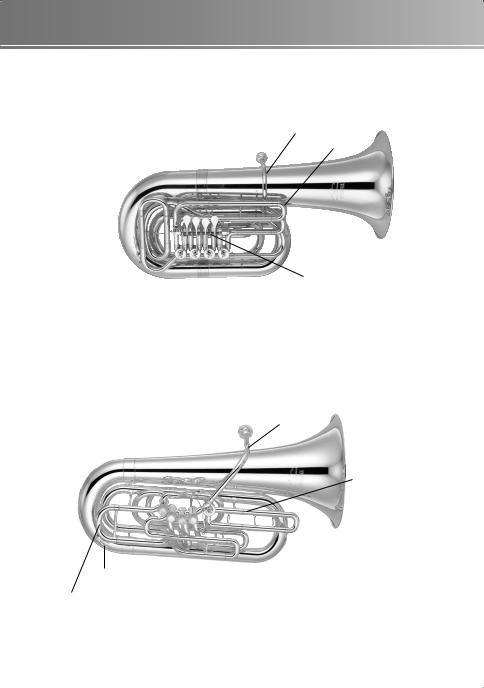
Nomenclature
■ Rotary Tuba
|
4th Valve |
Mouthpiece |
Bell |
||||||
|
|
3rd Valve |
|||||||
Main Tuning Slide |
|
2nd Valve |
|
Leadpipe |
|
|
|||
|
|
1st Valve |
|
4th Valve Slide |
|
|
|||
|
|
|
|
|
|
|
|||
|
|
|
|
|
|
|
|
||
|
|
|
|
|
|
|
|
|
|
|
|
|
|
|
|
|
|
|
|
|
|
|
|
|
|
|
|
|
|
Water Key |
|
|
|
|
|
|
|
|
|
|
|
|
|
|
1st Valve Slide |
||
|
|
|
|
|
|
|||
|
|
|
|
|
|
|
||
|
|
|
|
|
|
|
2nd Valve Slide |
|
|
|
|
|
|
1st Rotary Valve |
|||
|
|
|
|
2nd Rotary Valve |
||||
|
|
|
3rd Rotary Valve |
|||||
|
|
4th Rotary Valve |
||||||
■ Front Action Valves Tuba
Water Key
Main Tuning Slide
|
|
|
|
|
|
|
|
|
|
Bell |
|||
|
|
|
|
|
|
Mouthpiece |
|
|
|
||||
|
|
|
|
|
|
|
|
Leadpipe |
|
|
|
||
|
|
|
|
|
|
|
|
|
|
|
|
|
5th Valve Extension |
|
|
|
|
|
|
|
|
|
|
|
|
|
|
|
|
|
|
|
|
|
|
|
|
|
|
|
|
|
|
|
|
|
|
|
|
|
|
|
|
|
5th Valve Slide |
|
|
|
|
|
|
|
|
|
|
|
|
|
|
|
|
|
|
|
|
|
|
|
|
|
|
|
|
|
|
|
|
|
|
|
|
|
|
|
|
1st Valve Slide |
|
|
|
|
|
|
|
|
|
|
|
|
|
||
|
|
|
|
|
|
|
|
|
3rd Valve Slide |
||||
|
|
|
|
|
|
|
|
|
|||||
|
|
|
|
5th Rotary Valve |
|||||||||
|
|
|
1st Valve |
|
|
|
|
|
|
|
|
||
|
|
2nd Valve |
|
|
|
|
|
|
|
|
|||
|
3rd Valve |
|
|
|
|
|
|
|
|
||||
4th Valve |
|
|
* Refer to page 27 for 5th valve extension pitches. |
||||||||||
|
|
|
|
|
|
|
|
||||||
22
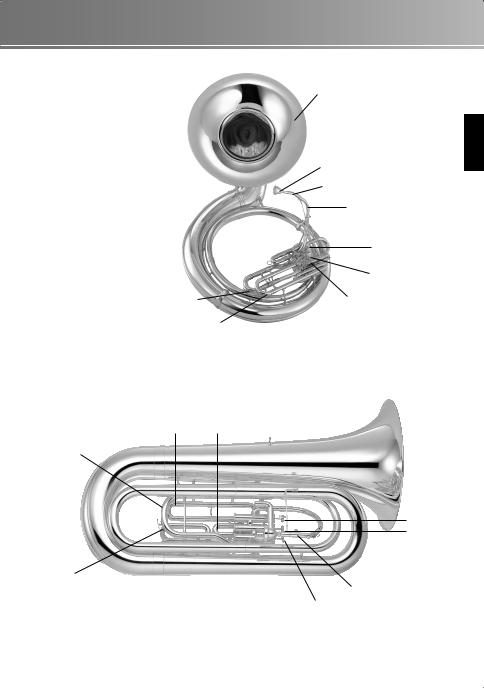
Nomenclature
■ Sousaphone
Bell
Mouthpiece
Bit
Leadpipe
1st Valve 1st Valve Slide 
 2nd Valve
2nd Valve
3rd Valve
Main Tuning Slide |
|
Cap |
|
||
Water Key |
||
3rd Valve Slide |
|
|
■ Marching Tuba
1st Valve Slide |
2nd Valve Slide |
Main Tuning Slide
1st Valve 2nd Valve
Water Key |
|
|
|
Leadpipe |
|
|
|
|
|
||
3rd Valve Slide |
|
|
3rd Valve |
||
Mouthpiece |
|||||
|
|
|
|||
* Specifications and/or design may change for reasons of improvement without notice.
23

 Before You Play
Before You Play
Handling the Instrument
The instrument is made with thin metal so please handle it with care. Do not apply any excessive force, or bump it in a manner that will dent or damage the instrument.
■ Applying Oil
Apply oil to the pistons
1.Unscrew the valve cap and pull the piston straight out of the valve casing until about half of the valve piston is exposed.
2.Apply about 10 drops of valve oil on the piston.
Piston
Valve oil
*Do not apply too much oil.
3.Slowly return the piston into the valve casing. At this time, make sure the valve guide fits into the slot inside the valve casing. After the valve cap is tightened firmly, move the piston up and down a few times to evenly distribute the oil over the piston.
*Each piston fits into its corresponding casing. Make sure the number stamped on the piston matches the number stamped on the casing before returning the piston into the valve casing.
*The pistons must be oiled to function properly and smoothly.
Applying oil to the rotors (Rotary Tuba Only)
1.Remove the valve cap and apply some rotor spindle oil to the spindle and in the center of the rotor.
Rotor spindle oil
Backside of the instrument
Rotor spindle
*Do not apply too much oil.
2.Apply some rotor spindle oil to the rotor spindle and its receiver. After closing the valve cap, move the lever a few times to distribute the oil evenly.
Receiver |
Instrument’s front |
Rotor spindle |
|
Rotor spindle oil
* Do not apply too much oil.
24
